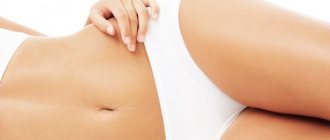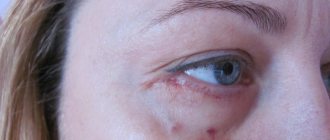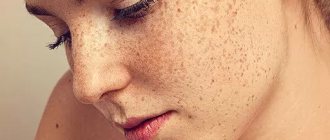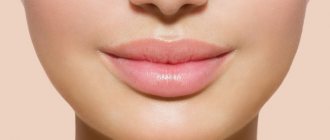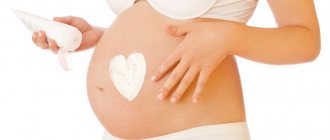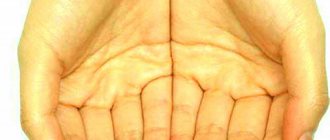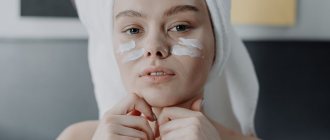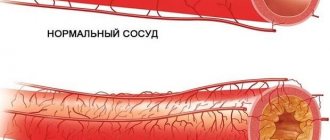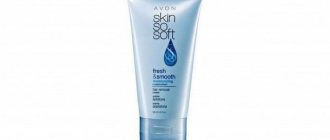Bleeding is the leakage of blood from vessels as a result of a violation of the integrity or permeability of their walls. Bleeding can be traumatic or non-traumatic, caused by chemicals entering the body or radiation.
Depending on which vessels are damaged, bleeding is divided into capillary (of the smallest vessels), arterial and venous.
Capillary bleeding is most common in children.
In a healthy child, blood clotting occurs within a few minutes, and a clot is formed that prevents further bleeding from the wound. Bleeding from a wound on a child’s head, as a rule, is profuse, and this worries parents, but even superficial wounds on the head always bleed heavily, since there are many blood vessels. The bleeding usually slows down and stops on its own within a few minutes, but if the wound is serious, first aid and sometimes medical intervention may be necessary.
Bruises form due to the accumulation of blood under the skin. Even in healthy children, bruises often appear after minor falls, especially between the ages of 1 and 4 years - they always have several dark blue marks on their shins. But a large number of skin bruises and their appearance in unusual places - on the shoulders, face, buttocks or back - can be caused either by more serious injuries or by certain rare diseases that impair blood clotting.
THE DOCTOR'S CONSULTATION
Contact your pediatrician if:
- Your child develops bruises for no apparent reason or in unusual places
- blood appears in the stool or urine
- After minor injuries, prolonged bleeding occurs
- the child has unhealthy pallor, fatigue and other symptoms of ill health
ATTENTION!
If your child bleeds for a long time or bruises for no apparent reason or in unusual places, call your doctor. Be aware of the possibility of violence against your child, especially if he refuses to say what caused the bruises.
| ASK YOURSELF A QUESTION | POSSIBLE REASON | WHAT TO DO |
| Do bruises form mainly on the shins? Is the child healthy and energetic? | Norm | Nothing. You have a healthy active child |
| Does your child have frequent nosebleeds? Is your general health intact? | Children's nosebleeds | Apply cold to the soft part of your nose and press firmly for a while. Let the child sit leaning forward until the bleeding stops. If bleeding is frequent and severe, contact your pediatrician . |
| Is your temperature elevated? Have a headache? Weakness and general malaise? | Infection | Call the pediatrician , he will prescribe the necessary examinations and treatment |
| Is your child bleeding from the rectum? Blood in stool? | Anal fissure; intussusception; polyps | Call the pediatrician , he will prescribe the necessary examinations and treatment |
| Does your child have multiple “pinpoint” bruises on the skin or large multiple bruises? | Blood disease, insufficient number or dysfunction of platelets | Make an appointment with your pediatrician , he will prescribe the necessary examinations and, if necessary, refer your child to a hematologist |
| Do you have multiple bruises, fever and vomiting? Is your child drowsy, disoriented or irritable? | Dangerous bacterial infection | Call an ambulance |
| Has your child developed multiple pinpoint bruises on the skin and vomiting after taking medication, such as an antibiotic? | Reaction to medication | Contact your pediatrician immediately ; the medication may need to be discontinued. |
| Does your child develop bruises on his elbows and shins for no apparent reason? Do you have stomach pain? Are your joints swollen and painful? | Allergic disease | Make an appointment with a pediatrician - he will establish a diagnosis and prescribe treatment |
| Does bleeding from a minor wound on the skin or mucous membrane continue for hours? | Deficiency of any coagulation factor - a disorder of the blood coagulation system | Consult your pediatrician - he will establish a diagnosis and prescribe treatment |
| Does your child return from school or kindergarten with bruises? Is he scared and withdrawn? | The child is being bullied, possibly physically abused | Talk to educators and teachers |
| Does your child bruise easily, is your child always pale, lethargic and/or irritable? | Examination required | Consult your child's doctor |
FOR INFORMATION
Hemophilia
This is a rare inherited disease; The disease mainly develops in boys, although rare types of hemophilia also occur in girls. Symptoms of hemophilia are caused by a deficiency of a clotting factor. However, even minor cuts and bruises can cause severe, even life-threatening bleeding. The diagnosis is usually made when the child is very young and, fortunately, the disease can usually be improved by replacing the missing clotting factor. Concentrated preparations of blood clotting factors are obtained from donor blood. Donated blood is carefully screened and processed, minimizing the risk of transmitting hepatitis or AIDS. Today, most children with hemophilia live full lives.
Ocher hematomas
Characteristic yellow bruises appear at the site of a bruise, inside which blood vessels have ruptured and released their contents under a layer of skin. When the blood is outside the usual walls, the process of hemoglobin breakdown begins, which is responsible for the coloring of the bruised area. At first it is purple, with a slight blue tint, then turns into a yellow-green color and gradually, approaching the moment of healing, becomes yellow-brown.
Among the most popular reasons for the appearance of bruises are the following:
- Lack of vitamin C.
- The memory accidentally erased the episode when the person fell or hit himself, considering it not so important.
- Pathologies in the functioning of endocrine organs or in their interaction with the central nervous system are fraught with the appearance of sudden bruises.
- Hypertension, tonsillitis, rheumatism and kidney disease, as well as pathologies in the circulatory system make themselves felt by colored spots throughout the body.
Why do some people bruise more often than others?
Typically, the incidence of bruising increases with age. A slight blow or scratch is enough to cause a bruise in an elderly person, but in children they do not occur with much more severe injuries. This is due to the fact that blood vessels become fragile with age.
Another reason may lie in the medications used that prevent blood clotting. These medications include prescription arthritis medications (non-hormonal anti-inflammatory drugs) such as ibuprofen (Advil, Nupril) or naproxen (Aleve) and over-the-counter medications such as aspirin. Warfarin (Coumadin) is often prescribed to prevent blood clotting in patients suffering from plaque in the blood vessels of the legs or heart. This medication can cause extremely severe bruising. And cortisone-based drugs, for example, Prednisone, increase the fragility of blood vessels. In addition, people with hereditary (hemophilia) or acquired (cirrhosis of the liver) bleeding disorders suffer from bruising, which, among other things, can lead to fatal bleeding.
Bruises after injections
Reasons for appearance:
- Error in the process of choosing the injection site. For example, you need to give an injection on the upper part of your right buttock. Experienced doctors advise mentally dividing the buttock into four areas and injecting where necessary at the moment. If the person using the syringe made a mistake and hit another muscle part, sending the medicine to less elastic tissues, then there is a high probability that a bruise will appear in this place.
- The injection was not deep enough to have full impact. All gluteal muscles are located under an impressive layer of subcutaneous fat. If the syringe is not inserted to the full length of the needle, then the medicine is 100% likely to get into the fatty area, causing the formation of bruises.
- Got a viral infection. If foreign bacteria enter the body along with the injection, they will provoke the onset of a subcutaneous inflammatory process. In turn, it forms spots on the body that resemble multi-colored hematomas.
- They injected a very tense muscle. Under this influence, an abundant blood supply begins at the injection site, which can enter the fatty tissue. And blood that gets into the wrong place provokes the appearance of bruises.
Why does the bruise not disappear and the swelling not subside?
Sometimes it happens that the bruise becomes hard and begins to increase in size. Soreness may occur. There are usually two reasons for this. First: such a large amount of blood accumulates under the skin or in a muscle that the body, instead of dispersing it, on the contrary, blocks the damaged area. This is called a hematoma, and only a doctor can help get rid of it.
The second, rarer reason: the deposition of calcium at the site of the bruise - a building material for bones. The damaged area becomes sensitive and hard. This condition is called referred callus or myositis, is diagnosed using x-rays and requires medical intervention.
When there is no special reason
It happens that characteristic hematomas appear on the body, but a person cannot remember the reason responsible for their formation. In this case, a special method will help, starting from the place where they appeared:
- Face and eyelids - more common in women whose bodies have entered the menopause phase. As a result of a lack of estrogen, a hormonal imbalance begins, tearing blood vessels and causing sudden bruising.
- Legs - due to vitamin deficiency, the vessels in this part of the body are too fragile.
- Abdomen - it is urgent to check the internal organs for hidden pathologies.
- Veins are a striking feature of varicose veins.
- Breasts - in some cases, they signal the onset of cancer.
How to draw a bruise on the face?
If the products you used did not help remove the bruise in 1 day, and you need to go to an important meeting, cover it with concealer. In the form of a cream, this product is suitable for masking a bruise under the eye, and in the area of the cheeks, chin, and forehead it is better to use a stick. Also consider its shade and the color of the abrasion.
Yellow concealer is used for purple bruises on the face, blue for red ones, and orange for covering greenish spots.
After treating the heel with concealer, apply makeup base, foundation, or just powder.
A bruise on the face is an unpleasant phenomenon, but before you eliminate it, try to find out the cause of its occurrence in order to promptly identify possible diseases that can trigger its appearance.
Swelling of the eyelids, affecting the cheekbones, and swelling under and above the eyes. It is unlikely that there will be a happy person who will say that he has never encountered this unpleasant phenomenon.
For people over 40, both men and women, swelling on the cheekbones is a familiar phenomenon and brings many unpleasant moments. We will look further at how swelling on the cheekbones occurs and how to quickly and effectively deal with them.
Actually, all types of swelling on the cheekbones can be divided into two types. Swelling affecting the upper part of the face: eyes, eyelids and cheekbones. This type is characterized by severe swelling in the morning and its reduction in the evening.
Here it will be a prerequisite for severe swelling to occur immediately. Without a long period of increasing bags under the eyes. This swelling occurs due to the accumulation of fluid in the cells.
A swelling that occurs in the upper part of the cheekbones, rarely affecting the upper eyelid and forming a distinct groove. Such swelling above the cheekbones makes wrinkles more pronounced. These are the so-called painting bags. Their occurrence is associated with weakening of facial skin turgor. Here, edema is formed due to sagging skin and swelling of the tissue of fatty hernias. “Painting bags” are a result of the aging of the body.
Methods to quickly get rid of bruises
Fast-acting remedies for yellowish spots include medical ointments: “Gepatrombin gel”, “Fastum gel”, “Troxevasin”, “Indovazin” and so on.
If hematomas appear without the influence of a bruise, you can use more useful methods. You should include more egg yolks, fish oil and green foods like broccoli or spinach in your daily diet. They contain a lot of potassium, without which normal blood clotting is impossible. For additional effect, you can make regular compresses at the site of the hematoma, consisting of boiled potatoes in their jackets, honey and soda. This mixture is mixed until the consistency of a homogeneous paste and periodically lubricated bruises.
Onion lovers can use a different recipe. You need to peel and boil one onion, make a paste out of it, add dried plantain leaves, ground into powder, honey and mix until it becomes a thick mass without lumps. Before use, this paste is heated in a water bath and rubbed onto bruises three times a day, moving with a kind of compress for at least two hours.
Tincture of calendula flowers helps no less well. You can buy it at the pharmacy or prepare it yourself. For this purpose, 20 grams of herb are poured with 100 ml of alcohol infusion and infused in a dark place for 14 days. The finished tincture is filtered and compresses and lotions are prepared from it for sore spots.
If a person wants to reduce yellow bruises, then he can use aloe leaves or a mixture consisting of soy flour, which is attached to the surface of the bruise. In some cases, they can be replaced with garlic: pour 2 heads with vinegar for a day. If you rub the hematomas with this infusion at least a couple of times a day, you can achieve impressive results.
Ways to deal with bruises on the face
Both pharmaceutical products and many traditional medicine recipes will help eliminate such an unpleasant problem. But before you raise the question of how to remove a bruise on your face, you should think about the true reasons for this phenomenon. The simplest option is when a dark spot appears due to mechanical impact. But if a bruise occurs for no apparent reason, it is worth contacting a specialist to exclude or diagnose a pathology that may manifest itself in this way.
If you suspect any disease, you need to stop self-medication and carry out timely diagnosis to prevent it from developing into a more severe form. Only the necessary therapeutic methods will eliminate the pathology and consequently prevent the occurrence of abrasions.
What can you do yourself?
You should use any medications only as prescribed by a specialist. You can adjust your diet yourself. Diversify your daily menu with foods rich in vitamins, especially P and C. These include bananas, herbs, rosehip infusions, cucumbers, salads, citrus fruits, black currants.
If you associate the appearance of bruises with taking medications, stop using them and consult your doctor.
Help with medicines
Bruises often appear closer to the eyes, puzzling the fair half of humanity. They go to doctors for help, who provide them with a wide selection of modern drugs. The leading places are occupied by:
- "Troxevasin". Hematomas disappear without a trace within the first couple of days. But despite this effectiveness, this medicine requires increased attention. Sore areas must be treated every 60 minutes. The medication breaks down yellow bruises, promoting rapid healing and strengthening blood vessels. In the absence of contraindications, it is recommended for the prevention of such formations.
- "Bruise-off." Contains leech extracts that can cure hematomas of varying severity, alleviating pain and swelling. A pleasant bonus will be the masking abilities of the ointment, hiding minor imperfections of the skin. But you will have to use this ointment especially often: doctors advise rubbing bruises at least five times a day.
- "Lyoton." Strengthens blood vessels, keeping all inflammatory processes in check.
- Heparion ointment. Improves blood clotting, helping to forget about swelling and inflammatory processes. Using it three times a day will provide excellent pain relief to any vulnerable spot.
And a few words about preventing bruises
If bruises occur too easily, you may not have enough Vitamin C. It strengthens the walls of the capillaries, reducing the likelihood of ruptures and hemorrhages. Ascorutin can be recommended from pharmaceuticals, citrus fruits, kiwi, sweet peppers, etc. from products.
Increase your intake of carrots, apricots and citrus fruits that contain bioflavonoids. This will increase the effectiveness of vitamin C in the body. Another good source of bioflavonoids is grape seed extract.
The recommended dose is 20-50 mg daily. A susceptibility to bruising may indicate a deficiency of vitamin K, which is abundant in broccoli, Brussels sprouts and leafy green vegetables. Naturally, ready-made drugs are also sold.
What does traditional medicine say?
If you turn to traditional medicine, you can find out many recipes with which yellow bruises will disappear in a matter of days. The most popular of them:
- Badyaga - dried seaweed, ground into powder. They are sold in every pharmacy. With their help, they make excellent lotions - the powder is diluted with water at room temperature in a 1:1 ratio, and especially bothersome bruises are rubbed with it. If you rub them 2 times a day, the yellowness, if not completely disappears, will decrease significantly.
- Potatoes are an excellent remedy in the fight against runny nose and viral infections. It can also help heal bruises. To do this, rub fresh potatoes and apply them to the hematoma. After the procedure is completed, the area is rinsed with water at room temperature.
- Herbal decoctions - coltsfoot, cornflower, chamomile, wild rosemary, linden blossom and celandine. After boiling water, add a teaspoon of herb and cook it for at least 10 minutes. Then you can turn off the fire and let the broth cool slightly. The finished tincture is filtered and used as needed. The most popular methods are to soak cotton pads with the tincture and apply them to the sore spots. Within a couple of days, the hematomas will completely disappear.
Now you know what yellow bruises are and how to get rid of them.
Ways to deal with causeless bruising
A variety of means can be used to combat bruises. Among them there are pharmaceutical drugs and folk recipes. However, if bruising occurs for no apparent reason, all these tricks will most likely give only a temporary effect. In this case, the root cause will remain unaffected, but it is precisely this that must be fought.
Elimination of possible causes of violations
The first thing you need to do is eliminate the factors that may lead to the development of the disorders described above. To do this, start eating more natural, fresh food. In particular, pay attention to vegetables and fruits high in vitamins, especially C and P. These include citrus fruits, bananas, greens, lettuce, cucumbers, black currants and others. In this case, it is better not to take vitamin complexes until consulting a doctor.
If bruises on the face begin to appear while taking any medications, then you should stop taking them and immediately go to the doctor to find an alternative.
Contact a specialist
One way or another, if bruises appear, a visit to the doctor is necessary. You must undergo all the necessary examinations, identify the root cause of the disorder and act directly on it. Self-medication in this case is not only useless, but also dangerous. You may lose valuable time, and the disease will progress to a more complex stage.
Bruising on the face for no reason can be completely harmless or be a signal of the development of serious illnesses. That is why you should carefully consider the problem and consider it not only as an external defect, but also as a possible symptom. However, this is not a reason to panic. You just need to promptly seek help from a specialist.
A bruise on the face is a rather unpleasant phenomenon, and it looks very unaesthetic. It can appear for various reasons.
In some cases, a bruise on the face may indicate pathologies of internal organs. In this case, it appears suddenly, for no apparent reason. This situation should not go unnoticed. Put everything aside and go to your doctor for advice. Perhaps he will find an explanation for your problem.
Paint bags are swelling that occurs as a result of aging of the body.
Age-related changes are the reasons that can also contribute to the formation of puffiness. With age, the aging process in the human body accelerates.
They make the skin less elastic due to the loss of natural elastin. Without exception, under the skin of the face, in the area of the lower eyelid, above the cheekbones, there are skin hernias filled with fat (sufas). They have a clear border at the bottom; this skin tissue bridge holds the fat and prevents it from sliding onto the cheeks.
While the skin is young and elastic under its tight, stretched top, the bags are invisible. They appear only in difficult situations (for example, critical days, severe lack of sleep). But with age, these formations become more and more noticeable, as the skin becomes less elastic and the bridge sags.
They acquire a bluish tint, become loose, and begin to absorb a lot of moisture. This happens especially quickly during the period of restructuring of the body (menopause), kidney disease, and heart disease.
One of the manifestations of this process will be the separating skin tissue forming a groove in the upper part of the cheekbone. If at a young age it is invisible, then over time it becomes more noticeable.
It provokes the formation of wrinkles around the eyes. “Bruises under the eyes” or “bags under the eyes” formed by lipid deposits are difficult to treat with simple compresses or ointments, and with age they become more and more difficult to remove.
Swelling of the eyelids and cheekbones caused by illness and disruption of the usual lifestyle
The first type of swelling can occur as a result of many reasons. Its treatment will depend on the factors that caused the swelling. Here, the primary disease should be treated first.
Swelling in the cheekbone area goes away after treatment for the underlying disease. In some cases, lifestyle changes may be necessary to reduce swelling on the face. Treatment of the edema itself in these cases will not bring results.
Factors and diseases that cause swelling on the cheekbones
Among the widespread factors of swelling in the eyes and cheekbones of the face there are several large groups. All causes can be divided into 3 groups.
Violation of the usual routine
Sleep disturbances. Often, lack of sleep, especially if sleep is interrupted at the stage of falling asleep, causes unpleasant swelling on the cheekbones. The person gets a tired and dissatisfied look and with too much time spent in the evening, excessive doses of alcohol; after tears;
